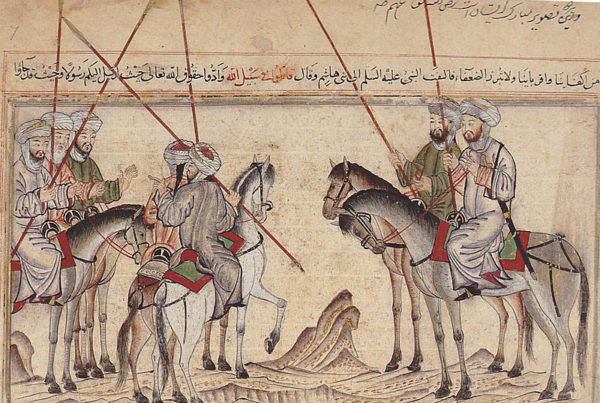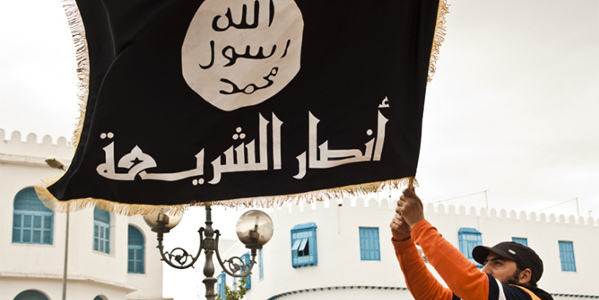“With two thousand years of examples behind us, we have no excuses when fighting for not fighting well.”
— Attributed to Lawrence of Arabia.
Max Boot’s entry into the field of popular military history came from almost entirely out of left field with the 2002 publication of The Savage Wars of Peace: Small Wars and the Rise of American Power. The book was a highly useful application of the best of small wars theory to the history of American involvement in the same since the Revolutionary War, arguing that American experience in these “Non-Trinitarian Wars” far exceeded their involvement in conventional war-fighting.
Boot had already been a noted journalist and commentator, weighing in on a number of issues from a contrarian conservative perspective, but Small Wars put him into the defence and security arena on the American domestic political map. Now, 11 years later, he has made good ground in a drive to refresh his earlier laurels with a survey of guerrilla warfare from the dawn of history to the present day.
The natural inclination of most military writers on the subject of guerrillas, terrorists, insurgents and others is to be somewhat contemptuous of their fighting ability. There is a difference between the soldier and the warrior; for example, the soldier will stand in the ranks under fire and hold his position and the warrior will not. The soldier requires special training and conditioning whereas anyone with the inclination can be a warrior. However, Boot shows no sign of this traditional contempt and has striven to be free of several customary polemic perspectives.
Still, Boot also looks to be too broad-minded in lumping terrorists, guerrillas, partisans, and tribal warriors all together; there are critical distinctions between many of these different combatants. Yet what Boot is looking at is the commonality of their doctrine. In a broad sense, they are alike in their use of what we have variously called guerrilla tactics, asymmetric warfare, or ‘Small Wars’.
What proved harder to digest, given the events of the last few years, was to accept Boot’s neutrality – for the objective purposes of his book – on the overall subject of terrorism. It is rare to find an unblinking examination of the effectiveness of terrorism. Regardless, nobody should accept the notion that the author actually approves of the likes of Hezbollah and al-Qaeda.
What Boot has done is take a look at the roots of guerrilla warfare from the very dawn of history and looked for the common elements to success and failure both for the warrior and for the soldier pitted against him.
One of the first flaws commonly found in such a sweeping analysis is the tendency of the historian to buttonhole events and developments into tidy arrangements. We are all familiar with ‘periods’ that end or begin with specific dates – ‘476 AD, the Fall of the Roman Empire’, an interpretation that many people at the time would have disputed; and nobody at that time looked at a calendar and thought “Hmmm 1066, ah, the start of the Middle Ages.”
Boot largely divides the history of guerrilla warfare into eight broad categories, which all overlap slightly. Even so, his broad categories are useful and often thought provoking. For example, most English-speaking people never think about Garibaldi that much, yet Boot seemingly regards Garibaldi as a pivotal figure being one of the last of the Liberal Revolutionaries spawned by the Age of Reason and the example for so many of the romantic revolutionary terrorists who followed. Garibaldi was as iconic in his time as Che was in the 1960s, and a lot more successful.
The other side of the equation are the soldiers who turn into warriors for special functions – such as the commandos and Special Forces types, and the countless generations of soldiers who have had to learn how to engage in counter-insurgency from the Babylon of ancient days to the Baghdad of today.
In counter-insurgency, as Boot so often points out, every campaign is different and every campaign is the same. There are lessons learned by Romans trudging after Sertorius that still apply to Americans looking for what remains of al-Qaeda.
There are two very helpful additions at the end of Boot’s Invisible Armies. Firstly, he compiles 12 useful lessons on the whole subject – none of which are particularly new but which have to be learned repeatedly by both the insurgent and the counter-insurgent. The first lesson is the most important… guerrilla warfare is the most common form of warfare throughout history. Soldiers might hold warriors in contempt, but they had better be very clear that they are more likely to be fighting them than other soldiers. The second addition is a helpful database of 381 insurgencies undertaken over the last 200 years – and the insurgents lose about two thirds of their wars.
Overall, Boot’s book is not an ‘experts’ book, but only a foolish expert would pass it up. A smart one would buy additional copies for every politician, journalist, and commentator he can think of.








